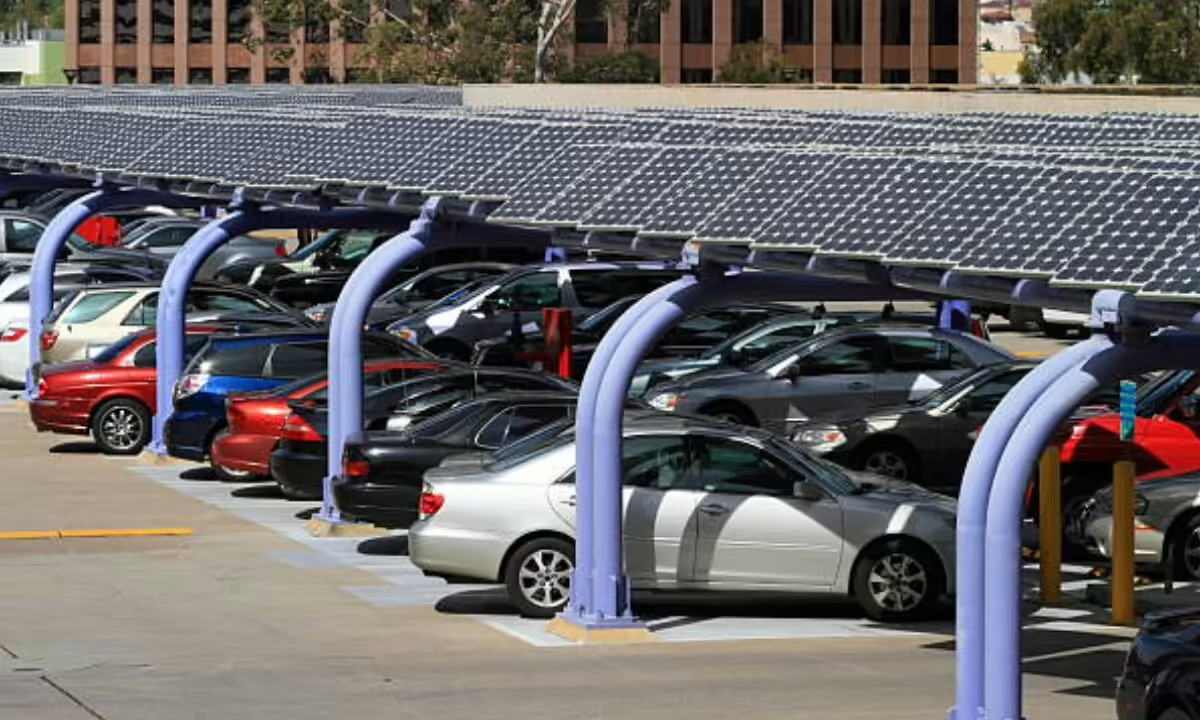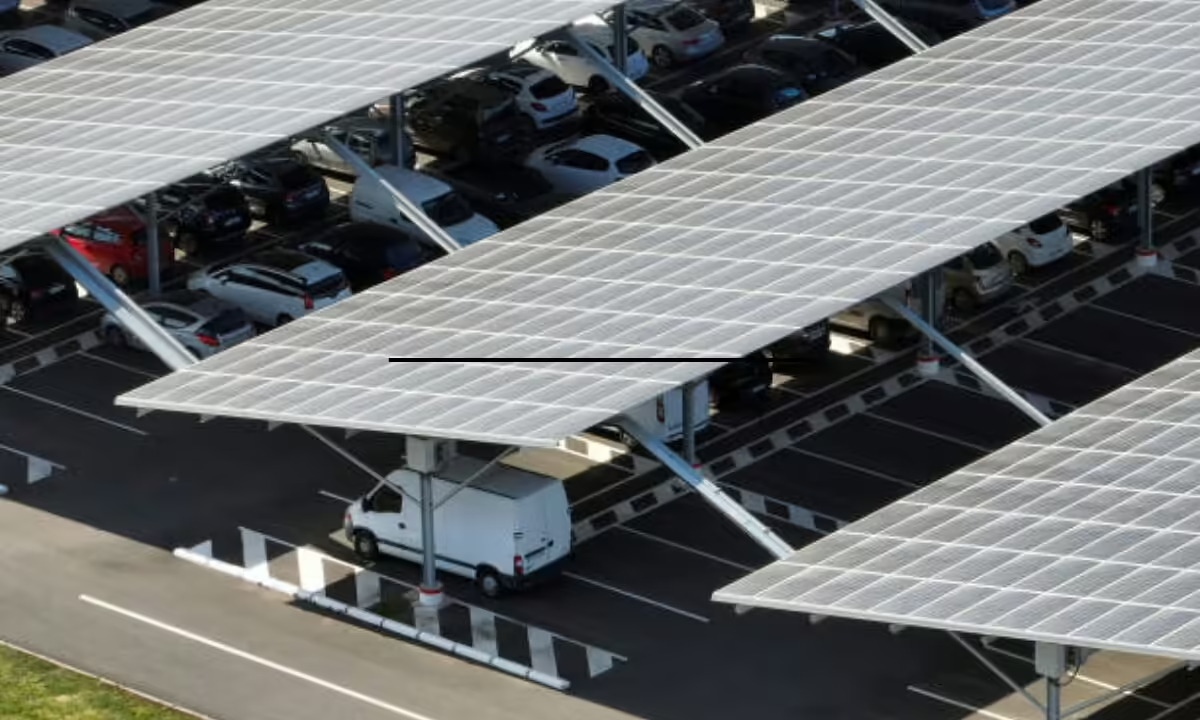Cities are fighting climate change, and sustainable solutions have become part of the urban planning culture. Solar carport is an innovation that revolutionizes renewable energy and sustainable urban development. Functionality, environmental benefits, and technological integration define solar carports as a forward-thinking solution to carbon footprints and optimized urban space.
What is a Solar Carport?

It can be defined as a structure carrying solar panels on top. Since both can be regular carports-only providing shade and protection; then the solar carport should be a combination of serving as a parking facility plus a source of renewable energy. Electricity can be utilized to supply adjacent buildings, charge the electric vehicle, and sell back into the grid.
They vary from single, simple car lots to large setups in large-scale commercial parks. The flexibility and modularity of the solar carports make them ideal to suit different needs ranging from residential to commercial to municipal levels.
Benefits of Solar Carports Contributing Towards Sustainable Urbanization
1. Optimization of Available Land
Solar is valuable in densely populated urban land. The solar carport maximizes land utility when parking lots are converted to power generation hubs. Conserving precious land resources this dual-purpose solution helped energize spaces while enhancing energy efficiency
2. Carbon Emission Reduction
This will reduce the emission of greenhouse gases since the use of fossil fuels will diminish because solar power will be harvested in carports. It is easy to shift to clean sources of energy for the sustainable development of cities.
3. Promotion of the Revolution of EV
Electric vehicles form the heart of a sustainable city. Easy, and eco-friendly means to rechargers come from solar carports, like this one. There EV chargers are installed – here, for example, is Panasonic’s EV Charger that combines Solar with EV technology to assist in speeding up the clean-transportation transition.
4. Smart Cities Integration
As always, solar carports align perfectly with the concept of smart cities. Hence, the incorporation of IoT-enabled energy management systems into these can be utilized for pretty effective monitoring and energy distribution. Thus, maximization of the urban goals for sustainability occurs in renewable generation forming the crux.
Technological Advancements in Solar Carports
Advanced Solar Panels
Modern solar carports use highly efficient photovoltaic (PV) panels that can produce high amounts of power even when the sun is scarce. Among these are bifacial panels that capture light on both sides, which increases the energy yield.
Energy Storage Solutions
Solar carports can be integrated with a battery storage system. Electricity produced during the day can be stored and used at night. This way, energy will be more reliable and less dependent on the grid.
EV Chargers
One of such advanced EV chargers is by Panasonic which covers solar carport solutions. One of its chargers specializes in efficient, safe fast charging with all safety options for ideal application to urban EV users.
It will provide smart monitoring systems that will enable real-time data about power generation, consumption, or storage at the carport. That way better decisions for optimizing energy would be provided to the owner.
Benefits of Solar Carports
1. Renewable Energy Generation
Solar carports generate clean, renewable sources of energy saving the money that one expended on bills and non-renewable sources.
2. Heat Reduction in Urban Areas
The asphalted parking lot is responsible for the heat island effect within the urban regions. The solar carports establish shades and hence reduce the surface temperature making a place cooler within an urban location
3. Cost Benefits
It has long-term economic advantages in using solar carports. Businesses and homeowners benefit from tax credits, subsidies, and cheaper cost of energy. This therefore is not a costly investment.
4. Enhanced Property Worth
Properties that have solar carports enhance their worth because it makes one show green and leanly structured infrastructure.
Case studies: Solar Carports at Work
1. Business Parking Lots
Retail chains and corporate offices have solar carports to carry out their businesses and provide EV charging stations. This in turn helps in raising the green profile along with attracting environmentally conscious consumers as well as employees.
2. Urban Installations
Cities are deploying solar carports through public space in transit hubs and parks, where they provide streetlights and public utilities for sustainable urban initiatives.
3. Residential Communities
Homeowners’ associations and residential complexes install solar carports to power communal facilities whilst providing EV charging. The costs of energy for communal usage have been lowered with such an initiative while at the same time enhancing sustainability.
Challenges Solved with Installation of Solar Carports
The following are some challenges of solar carports
- High Installation Costs: installation of a solar carport is very expensive though the government offers incentives to the majority of places to offset the charges.
- Regulatory Barriers: Installation may be restricted in some areas due to zoning and building regulations.
- Maintenance Requirements: The solar panels require frequent cleaning and maintenance to ensure maximum output.
The future for solar carports looks very bright with the advancement of solar technology, energy storage, and EV infrastructure. Indeed, the future is grid-independent with built-in energy storage in the form of solar canopies. The integration of these solutions with the technology providers’ partnerships will also facilitate more sustainable cities. Such an example is between the solar companies and the Panasonic EV Charger manufacturers.
Getting Started with Solar Carports
- Assess your needs: size and applications of the solar carport
- Consult Professionals: Let experienced solar providers design and install it for you.
- Find Incentives: Determine government grants, tax credits, and rebates on solar installations available in your location.
- Integrate Technology: Leverage the use of this technology by including EV charging stations and smart monitoring technologies.




